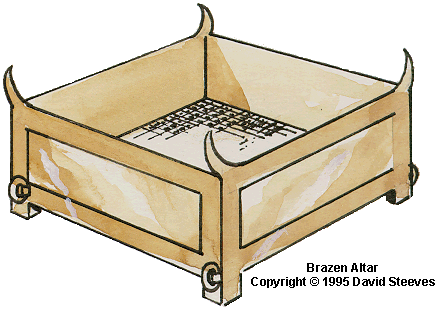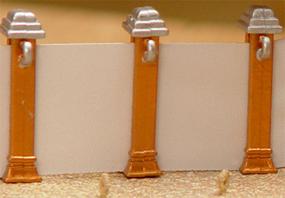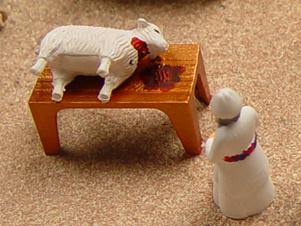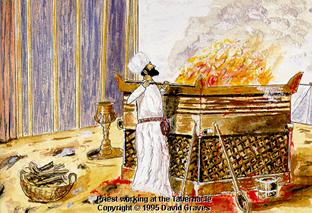Blueprints: Courtyard 27
“…the tabernacle was build to symbolize God’s presence in their midst. A courtyard with a high fence around the tent indicates the separation that sin causes between sinners and a holy God. The courtyard fence has one entrance at one end facing the door of the tent. This presents a ‘double image.’ “On the one hand, there were barriers that [blocked] off God’s holiness; on the other, a way of access was opened by His grace.” ” -Matt Capps
Bronze Altar 27:1-8

“The altar was the biggest piece of furniture in the tabernacle…it was square with horn-like projections at each of the four corners. This style of altar was common in those days” -Philip Graham Ryken
What were the horns for? Its not entirely clear from the text alone. Ideas:
�
- They were simply ornamental
- For tying down animals
- Symbolic of the animals that were slain there
- Horns were symbolic of strength (Ps 18:2, God is the horn of my salvation), salvation, and security
“But whatever the horns symbolized, they must have been important, because the priests sprinkled blood of their sacrifices on them (29:12).” -Philip Graham Ryken
Bronze is more durable and heat-resistant than most metals; so it was the right material to use for an altar. There was also a good spritual reason to use bronze…[Use of gold vs. bronze indicates a contrast between God’s presence and earth]…Since the altar was out in the courtyard, it was made of bronze, as were all of its utinsels” -Philip Graham Ryken
The Bronze Altar of the Tabernacle made a significant change to how Sacrifices to God were to be done:
- Previous to this altar, the worship of God centered around a family altar, e.g.: Noah (Gen.8:20) Abraham (Gen 12:7-8) Isaac (Gen 26:25) Jacob (Gen 35:1). (Watton)
- Now the Altar was now for the Nation, only one Altar, only one place of sacrifice. It was the only place where God would meet with the sinner or accept the worshipper, sacrifices could be offered nowhere else (Lev. 17:1-9). (Watton)
“The Bronze altar was now the only acceptable place of sacrifice, from many to just one place for forgiveness to be found and then God appointed one place in time as Christ died once for all, there is now no need for further sacrifices.” -Watton
“The bronze altar was a demonstration of the holiness of God. His willingness to accept the prescribed sacrifice to enable relationship with Him… The altar speaks of complete dedication, just as Christ was the complete and perfect sacrifice (Heb.10:1-7). We also should offer ourselves completely as a living sacrifice to God (Rom.12:1-2)…The altar is the place were God shows that he accepts and sanctifies the gift we give, whether it be financial, a talent or an ability we recognise they are from God and consecrate them to God.” -Watton
“The sacrifice burnt to ashes given irrevocably to God, no possibility of reclaiming it.” -Watton
“The censers that were nailed to the altar represent rebellion and ambition. We need to nail our ambitions before they lead to rebellion” -Watton
“It must be remembered that todays ashes were yesterdays sacrifices. Our relationship with God can not be based on past events, our past sacrifices or yesterdays achievements. Our relationship with God is vital and alive, it lives in the ‘now’ time, today. Hebrews 4:7 says “Therefore God again set a certain day, calling it Today, when a long time later he spoke through David, as was said before: “Today, if you hear his voice, do not harden your heart ” -Watton
Where is the altar positioned? “The meaning is clear. The beginning of fellowship between God and man requires dealing with sin. In the case of the Israelites, it was a system of sacrifice as sin offerings” -Dr. Maxie D. Dunnam
Courtyard Construction 27:9-19

Courtyard Use 27:20-21


One thing that is interesting about this description of the tabernacle courtyard in Exodus 27 is that it completely omits the bronze laver (wash-basin) used by the priests, it is not mentioned until after we go back in Ch. 30 and fill in one gold, one silver, and one bronze item.
